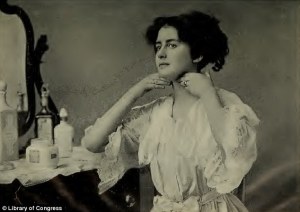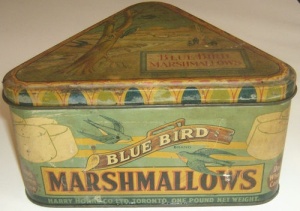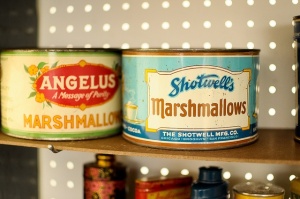Jessie is almost too old to play with toys, so she doesn’t mention many, but on a cold day when all the children were playing inside, she writes that Swayne fixed the Humpty Dumpty Circus. It could have been very similar to this Humpty Dumpty Circus from 1905.
Every once and a while Jessie mentions that her mother has washed her hair. Shampoos were only just becoming available in stores, and liquid shampoo was not invented until 1927. In any case, women might only wash their hair every 3 or 4 weeks. Eggs or egg whites were thought to be excellent cleaning agents for hair, and there were various other potions or tinctures that one could mix up and use for oily or dry hair. In between washes women used a dry shampoo of cornstarch to soak up excess oil, which they brushed out thoroughly with a long soft-bristled brush. Margaret Mixter wrote the book Health and Beauty Hints (1910)
 in which she describes ways a woman can enhance and prolong her ‘beauty.’ One tip: “By the time a woman is twenty-five years old she should devote at least ten minutes, night and morning, to massaging her throat under the chin. She may see no reason at that period for massage, but should she take the trouble, by the time she is forty she will not have the hanging “dewlap,” which, more than anything else, proclaims her no longer young.” Hmm… perhaps I should have been massaging!
in which she describes ways a woman can enhance and prolong her ‘beauty.’ One tip: “By the time a woman is twenty-five years old she should devote at least ten minutes, night and morning, to massaging her throat under the chin. She may see no reason at that period for massage, but should she take the trouble, by the time she is forty she will not have the hanging “dewlap,” which, more than anything else, proclaims her no longer young.” Hmm… perhaps I should have been massaging!
In the cold weather Jessie and her friends loved to roast marshmallows in the fireplace. When I looked to see when marshmallows were invented, I was surprised to find that the marshmallow candy actually originated in ancient Egypt and was made from a mallow plant which grew in the marshes. Drawing the sap from the roots of the marsh mallow plant, which acted as a thickener and binder, the Egyptians mixed it with eggs or egg whites, honey and nuts to make a medicinal sweet treat that soothed sore throats and mouth ulcers. In the mid-nineteenth century marshmallows were so popular that a quicker way of producing them became necessary. Gelatin replaced the mallow plant sap in the new production method, so all medicinal value of the sweet was lost.


